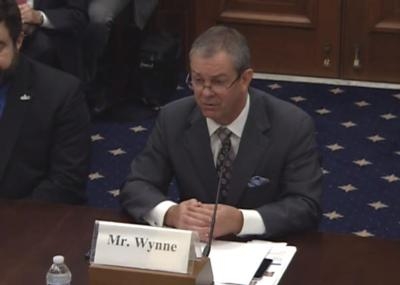Effects Of New Regulations On The Commercial Drone Industry Explored By House Small Business Committee’s Subcommittee on Investigations, Oversight and Regulations
Small business owners told a key Congressional subcommittee last week that new federal regulation that allows commercial use of small unmanned aircraft systems, otherwise known as drones or UAS, are opening up the skies and opportunities for new jobs and economic growth. However, effective and efficient implementation of the rule and the FAA's next steps to fully and safely integrate UAS into the national airspace system are critical to the industry’s success. The FAA projects that 90 percent of drone owners will be small businesses making clear and sensible regulation essential as these entrepreneurs try to get startups off the ground and improve existing small businesses day-to-day operations through the use of this technology.

“We are bearing witness to the next great aviation renaissance,” said Rep. Cresent Hardy (R-NV) (pictured), Chairman of the House Small Business Committee’s Subcommittee on Investigations, Oversight and Regulations. “Advances in technology have cleared the way for a reality that, only a short time ago, was merely a dream.
“From the delivery of goods to the surveying of land, unmanned aircraft systems, otherwise known as UAS or drones, are poised to change how we do business. And with an initial report indicating that an overwhelming majority of companies operating UAS for commercial purposes have 10 employees or less, this industry will truly be a small business industry,” Subcommittee Chairman Hardy said.
“Unmanned aircraft systems, or UAS, increase human potential, allowing us to execute dangerous or difficult tasks safely and efficiently,” testified Brian Wynne (pictured, below) on behalf of the Association for Unmanned Vehicle Systems International (AUVSI). “From inspecting pipelines to surveying bridges to filming movies, UAS help save time, save money and, most importantly, save lives. It is no wonder why thousands of businesses—small and large—have already embraced this technology, and many more are considering integrating it into their future operations.”

“While we appreciate that Part 107 allows for waivers to operate beyond the visual line of sight (BVLOS) and over people, the FAA’s next phase of regulations must provide for even more efficient approval of these types of operations or the United States will fail to develop the robust commercial drone industry that other countries are actively pursuing,” added Gabriel Dobbs, the Vice President of Business Development and Policy at Kespry Inc., who testified on behalf of the Small UAV Coalition. “A rancher in Nevada or a farmer in North Carolina cannot fully benefit from drone technology if he must follow his drone in his truck to maintain the visual line of sight while inspecting his property.”
“PACI has been involved in the development of the Eldorado Droneport in Boulder City, Nevada since the summer of 2015. I want to state that we are thankful for the positive support and assistance we are getting from UAS Office and Airports Division. However, during this process, we have encountered some issues as the regulatory structure does not address UAS activity on airports. There is a need for additional regulatory improvements,” observed Jonathan H. Daniels of Praxis Aerospace Concepts International, Inc. “Airports are categorized by the number of passenger boardings or by tonnage of cargo- this metric does not work with the current limitations of UAS operation. UAS do not count towards the number of based aircraft, and there are no acceptable standards for traffic patterns for any size UAS.”
(Source: House Small Business Committee news release. Images from subcommittee hearing video)
 Airborne 04.16.24: RV Update, Affordable Flying Expo, Diamond Lil
Airborne 04.16.24: RV Update, Affordable Flying Expo, Diamond Lil ANN's Daily Aero-Term (04.20.24): Light Gun
ANN's Daily Aero-Term (04.20.24): Light Gun Aero-News: Quote of the Day (04.20.24)
Aero-News: Quote of the Day (04.20.24) Aero-News: Quote of the Day (04.21.24)
Aero-News: Quote of the Day (04.21.24) ANN's Daily Aero-Term (04.21.24): Aircraft Conflict
ANN's Daily Aero-Term (04.21.24): Aircraft Conflict




